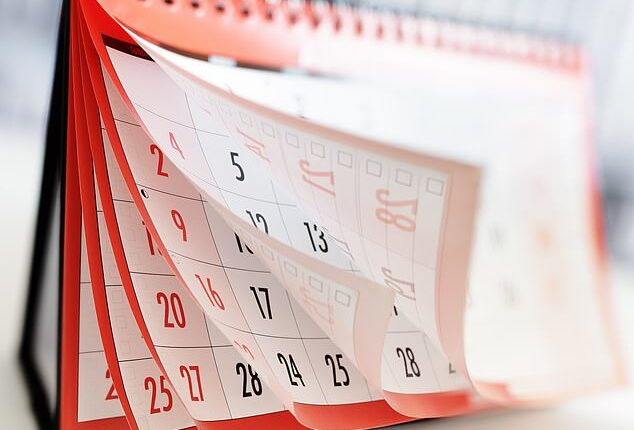
This week marks the start of the new tax year, meaning savers can make the most of a brand new tax-free Isa allowance of £20,000.
Eager savers and investors will have been rushing to top up their Isa to benefit from the annual limit in the days leading up to the end of the last financial year, but some will already be looking ahead.
Putting money in to a stocks and shares Isa earlier in the year rather than later gives the investor more time to benefit from potential growth – and new figures have made plain just how much they could gain in the long term by taking an ‘early bird’ approach.


Get ahead: Had you invested £3,000 in the average global fund on the first day of the tax year instead of the last day each year since 1999 you would have come out with over £9,000 more
Figures from stockbroker AJ Bell show that an investor would be £9,271 better off if they invested £3,000 into an Isa in the average global equity fund on the first day of each tax year since 1999, instead of the last day.
Early bird investors would have amassed a pot worth £200,373, compared to last-minute investors who would have £191,102 in their Isa.
They would even benefit from this approach in a difficult investment market, the research found.
Why is it better to invest into your Isa early?
Investing your Isa allowance as soon as it is available every year on 6 April means your money is protected from tax from the outset, explains Laith Khalaf, head of investment analysis at AJ Bell.
But it also means you stand to have a bigger Isa pot because your money is at work in the market for longer.
The early contribution will be compounded in each year. So even if the early bird Isa investor has a bad first year, the market recovers over time and that early contribution eventually breaks even, and then makes it into profit.
Even in difficult markets early bird investors stand to be better off than last-minute investors.
The AJ Bell research shows that during the global financial crisis early bird investors would still have come out ahead of last-minute ones, with a final Isa value of £94,443 compared to £88,044 in the Isa of the last-minute investor.
| Start date | Total contributions | Early bird Isa value | Last minute Isa value | Difference |
|---|---|---|---|---|
| Tax year 1999/00 | £72,000 | £200,373 | £191,102 | £9,271 |
| Tax year 2008/09 | £45,000 | £94,443 | £88,044 | £6,399 |
| Source: AJ Bell, Morningstar, total return of the IA Global sector to 22/03/2023, last contribution for the last minute ISA investors assumed to take place on 22/03/2023 rather than 05/04/2023 | ||||
A survey carried out by CapitalRise last week revealed that just 34 per cent of UK adults were aware that you can invest £20,000 into an Isa tax-free every year.
Cash Isas are popular with savers, but with a stocks and shares Isa your money has the potential to be boosted by stock market returns.
Any investment growth or interest earned is free from tax and you can access a range of products including funds and investment trusts.
Interactive Investor’s senior personal finance analyst Myron Jobson says ‘Investing via a stocks a shares Isa is likely to remain the best long-term option for Isa savers.’
While past performance is not indicative of future results, stock market-based investments have a history of producing returns that trump cash savings interest and inflation.
Due to the up and down nature of the stock market, it is recommended that investors hold their money in a stocks and shares Isa for the long term, at least five years, in order to ride out times of market volatility.









